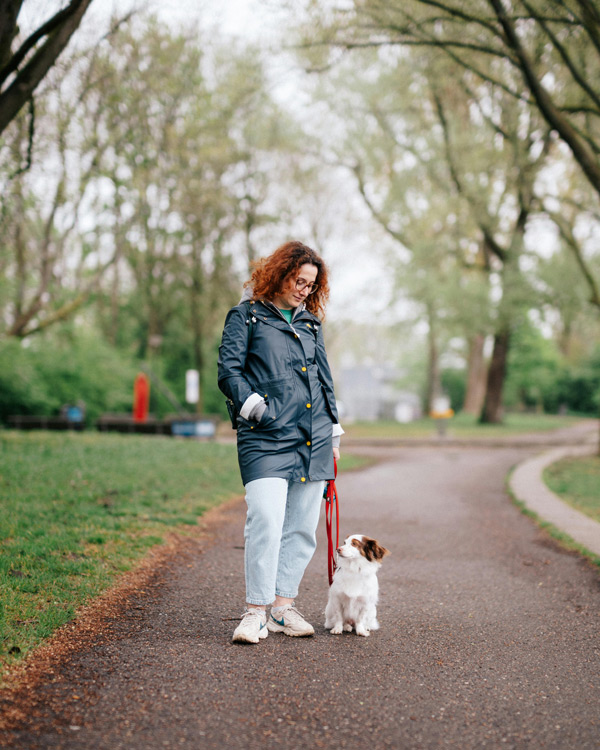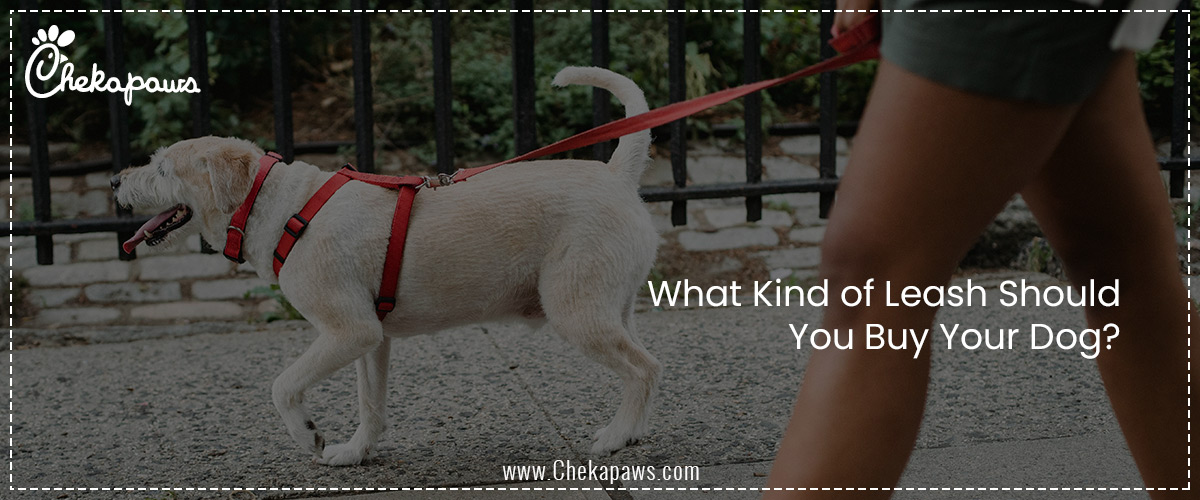A dog leash is an important part of your dog’s everyday routine, a lifeline, and a communication tool in addition to being a weapon for control. Selecting the appropriate leash can improve training results, increase the enjoyment of walks, and ensure your pet’s safety.
It can be difficult to choose the ideal leash for your pet with so many variations available. The goal of this post is to walk you through each of the important factors.
Table of Contents

Why the Right Leash Matters
Using the wrong leash can result in:
- Physical injury to you or your dog
- Inadequate instruction
- Accidents and escapes
- Problems with behavior
A well-chosen leash matches your dog’s collar or harness and improves comfort, safety, and communication.
Common Types of Dog Leashes
Standard Leashes
Length are typically 4–6 feet.
Ideal For: Daily strolls
Advantages: robust, easy to use, and widely accessible
Cons: Limited roaming flexibility
For the majority of dog owners, standard leashes are essential. They are ideal for daily walking routines and are available in a range of materials.
Leashes That Can Be Retracted
Up to 26 feet in length
Ideal For: Open spaces
Advantages: Mobility
Cons: Poor control and potential for harm if misused
These leashes are not recommended for High-traffic locations and untrained pets They can promote abrupt lunging and pulling, which makes them problematic.
Adaptable Leashes
Length: Variable with points for adjustment
Ideal For: Owners that require adaptability
Advantages: Adaptable to various walking conditions
Cons: It could be more difficult to utilize.
These leashes come in a variety of lengths and can be used hands-free.
Slip Leashes
Design is Pull-tightening loop
Ideal For: Fast handling and training
Advantages: Simple to put on and excellent for training
Cons: If overused, it can choke
Frequently used by shelters and trainers for dogs without collars.
Martingale Leashes
Design: integrated leash and collar
Ideal For: Canines that lose their collars
Advantages: Mild control
Cons: Not for a lot of stress
Perfect for narrow-headed breeds, such as Greyhounds.
Hands-Free Leashes
Design: Fits across the shoulder or around the waist.
Ideal For: Hikers and Joggers
Advantages: Mobility
Cons: Less control right away
Excellent for active lives, particularly with dogs that are well-trained.
Long-Line Leashes
Length: 10 to 50 feet
Ideal For: Outdoor play and memory training
Advantages: Great for remote work
Cons: Easily tangled
Excellent for outdoor training.
Chain Leashes
Ideal For: Dogs that chew
Pros: Chew-proof
Cons: Heavy, uncomfortable to hold
Not recommended for daily use; best used as a training aid or backup.
Two-Handled Straps
Design: Near the dog, the second handle
Ideal For: Managing crowds and taking walks in cities
Advantages: Improved control
Cons: A little heavier
Enables rapid control and correction in confined areas.
Leash Materials: Pros and Cons
Advantage and disadvantage of nylon
- Pros: Inexpensive, light, and vibrant
- Cons: Absorbs moisture and may cause rope burn.
Advantage and Disadvantage of Chain
Pros: Resistant to chewing
Cons: Uncomfortable and heavy
Advantage and Disadvantage Biothane:
- Pros: Waterproof, long-lasting, and cleanable
- Cons: Not as accessible
Advantage and disadvantage of rope:
- Pros: robust, suitable for huge breeds
- Cons: Over time, it may fray.
Choosing a Leash by Dog Size
- Small dogs (under 20 lbs): shorter length, lightweight nylon or biothane
- Medium Dogs (20–50 lbs): Leashes that are standard or adjustable
- For large dogs weighing more than fifty pounds, use rope, leather, or sturdy nylon with padded handles.
- Retractables should not be used on large or strong dogs unless they are extremely well-trained.
Choosing a Leash by Temperament and Behavior
- Pullers: Use a front-clip option or a no-pull harness with a double-handled leash.
- Slip or Martingale leash for dogs that are afraid
- High-intensity: Training line
- Chewers: heavy rope or chain
- Well-trained: leash that can be adjusted or hands-free
Leash Length Guide
- 4 feet: Urban areas, close control
- 6 feet: Standard walks
- 10–15 feet: Training
- 20+ feet: Off-leash simulation, recall training
Best Leashes for Training
- Slip leash: Simple to use and fast correction
- Long-line leash: Perfect for distance management and memory
- Dual-handled leash: Management and instruction
- Martingale: For delicate canines
Best Leashes for Walking, Hiking, and Running
- Walking: A standard leash with a cosy fit
- Hiking: A leash that may be adjusted or used hands-free, preferably waterproof
- Running: A waist leash with characteristics that absorb shock
- Reflective materials and safety clips are necessary for expeditions in poor light.
Safety Features to Consider
- Reflective stitching or material
- Padded handle for grip
- Locking carabiner clip
- Traffic handle for control
- Chew resistance
- Shock absorption
Leash Laws and Etiquette
- Check local leash regulations at all times.
- In congested places, use short leashes.
- Don’t allow your dog approach others without permission
- Stay away from retractables in crowded parks.
Top Brands and Product Recommendations
- Ruffwear: high-quality, long-lasting outdoor leashes
- Kurgo: hands-free, adventure-ready alternatives
- Max and Neo: shelter contributions
- Excellent training leashes from PetSafe
- TUG: well-liked retractables
- Reflective and runner-friendly, Mighty Paw
How to Maintain and Clean Your Dog Leash
- Hand wash nylon with a gentle soap.
- Leather: Apply a gentle cloth and conditioner.
- Rinse and wipe clean biothane
- Chain: Use a moist cloth to wipe and pat dry
- Check frequently for wear, corrosion, or frays.
DIY Leash Tips
- For an inexpensive leash, use carabiners and climbing rope.
- Paracord for dogs that weigh little
- To improve grip comfort, add a handle wrap.
- Use knots to create a traffic handle.
When to Replace a Leash
- Split or fraying
- Broken hardware or clip
- Extended bungee segment
- Discolouration, particularly on Biothane or leather
- Areas that are chewed
- For safety, a worn-out leash must be replaced.
Conclusion
There is no one-size-fits-all approach to choosing the ideal leash for your dog. When choosing, take your dog’s size, behaviour, and way of life into account. The ideal leash makes sure that you both have a safe and enjoyable experience, whether you’re going for a leisurely stroll, a strenuous workout, or an exciting excursion.
You and your dog deserve to spend in quality, so take your time, try a few options, if you can.







